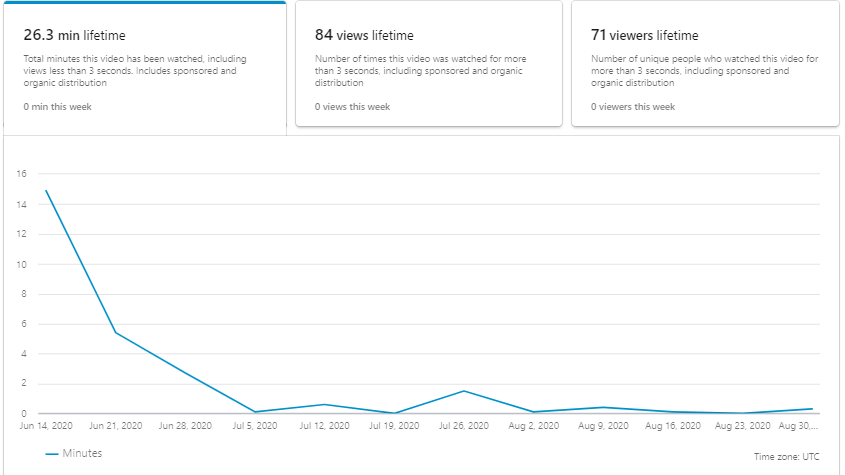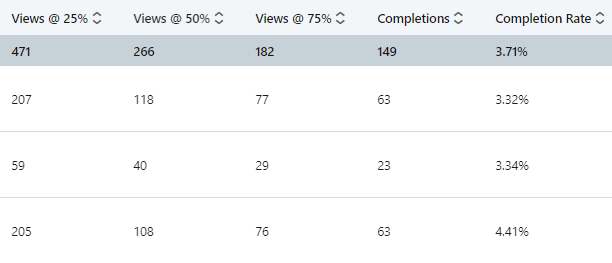If you’ve been tuning into this post series you’ve already seen our best practice advice for planning a content campaign, defining your topics, and creating your content.
Here we’re looking at how to package your content for it’s medium and distribute it within that medium.
If you are enjoying this post series signup here to be notified when that post comes out.
What is content packaging?

If an idea or an insight is the product, the packaging is the design vehicle that helps it to reach your target audience.
As an example, a blog post is made up of the ideas within the text, as well as the form and structure of the text itself, any images included etc. Ideas and packaging are useful to think of separately. The ideas in the blog post could have been expressed as a video, an infographic or as a podcast.
Packaging content is important because:
1. It has a huge impact on the short term reach and engagement of your content
2. It has a huge impact on the long term brand building effects of your content
Concise, useful ideas are the cornerstone of effective content, but without appropriate packaging and distribution, the best ideas are likely to be buried under a mass of competing content.
Packaging for your medium and audience

Within any medium, there is a set of unspoken rules that successful content within that medium usually follows. LinkedIn is not the place for feature-length movies, YouTube might not be the best place for your static infographic and Twitter is not a great medium for thesis length writing.
Equally important is your audience. Tech-savvy marketers might be more likely to signup for an online course than dentists for example. You’ll need to consider what your audience is familiar and comfortable with when considering your packaging.
This idea of “prototypical design” permeates all aspects of content packaging:
- How long your video, text or infographic should be
- Whether you can incorporate imagery and what kind
- Whether you can gate your content at all or if it should be available to freely access
- Whether content should be published directly into a social feed or linked away to
- How often you can post content
- Whether and to what degree brands interact with their users
Getting noticed

Blending into prototypical noise is not the goal of content marketing. So while you have to keep to the expectations of your audience, for the most part, you’ll want to experiment within that ruleset.
For example, your team has an insight into a regulatory change. That can be delivered on LinkedIn as a short video interview. Most successful videos on LinkedIn follow a few prototypical rules:
- Square videos (with a 1:1 aspect ratio) take up more vertical real estate in a feed and perform better at grabbing attention.
- Videos less than 2-3 minutes and focusing on one concise point perform better at conveying a message.
- Videos with a higher quality image, that feature positive messaging and people are more likely to deliver engagement.
- Videos should include subtitles and a strong primary title at the top of the post to pull audiences out of their scrolling behaviour.
Those are the basic rules, but the packaging the content within those rules is how you get noticed. Variations of the title, of the colours and design of your video. How you integrate branding, as well as the length all, have an impact on the reach and effectiveness of the insight.
How to test and tune

You'll notice that there are no examples in this post.
Packaging is not something you can identify once and use forever. It’s not something you can copy from others. It’s not something that opinion or gut feel can determine.
What’s working is constantly changing all mediums - it’s your job to continually uncover what is working.
The best way to do that is to measure engagement with your posts. How much of a blog post do people read? How much of a video is your audience watching? How much of that podcast was actually listened to?
This can be done within most platforms, including Twitter, Instagram, LinkedIn and Facebook. Within your own website, Google Analytics event tracking is easy to implement and definitely your friend.


You are trying to get a deep understanding of what works for your audience and medium. As a marketer that makes you more valuable to your firm. Better content keeps the audience engaged, grows your audience base and creates better connections with your brand.
I generally try one new experiment every 2 weeks to give time to execute and collect data. If you have a bigger team or a larger audience that number should be higher. Don’t feel like every experiment needs to be new or grandiose. Small changes over time add up.
Some experiments we've run over the last couple of months:
Animated video vs Static image with audio
Soundwave visualisation 1 vs Visualisation 2
With these experiments, we could see a clear winner but even if we hadn't, we've still learned a lot about what is easy to produce, how to repackage existing content and how we could overcome a lack of in-person video.
However you choose to approach packaging, remember that the knowledge and craft that you practice here is the value you bring to the business as a marketer. Giving yourself a better understanding of how to reach customers makes you more valuable to this firm and the next one.





/Passle/53d0c8edb00e7e0540c9b34b/MediaLibrary/Images/2025-06-24-15-50-59-531-685ac963d81bf11b7522dd8e.png)
/Passle/53d0c8edb00e7e0540c9b34b/MediaLibrary/Images/2025-12-18-10-52-26-493-6943dceac311190ddba15d64.jpg)
/Passle/53d0c8edb00e7e0540c9b34b/MediaLibrary/Images/2025-12-16-15-16-25-843-694177c9190f803408651724.jpg)
/Passle/53d0c8edb00e7e0540c9b34b/MediaLibrary/Images/2025-12-09-11-05-31-284-6938027b1b6076d9d8980f1e.png)
/Passle/53d0c8edb00e7e0540c9b34b/MediaLibrary/Images/2025-12-04-20-27-35-105-6931eeb7f170698845c6b19b.jpg)



